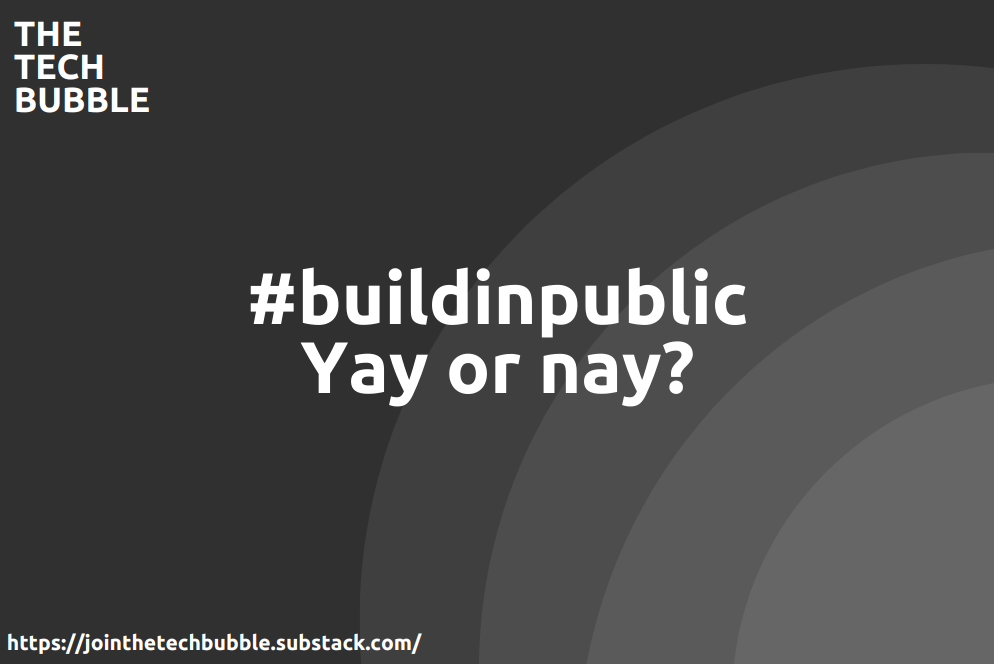#buildinpublic - yay or nay?
Building in public seems to be working for some. But is it the right thing to do as an indie founder?

I guess some of you, especially if you are already familiarized with the indie hacking space, already know about the #buildinpublic movement. For those who are not, #buildinpublic is a strategy to grow your personal brand and market your skills and products by publicly documenting your builder journey, step by step.
Basically, when you are building a startup from scratch, you’d go the ultra transparency route and document every step, what experiments you make, how your numbers evolve (clients, page visits, MRR which is very popular nowadays, churn rate, etc).
Advantages
Undeniably, this comes with some advantages: indie hackers love this kind of content, engage with it and tend to follow people who are sharing the same struggles as them.
So the target audience for this kind of movement are indie hackers themselves, which connects to some points I made in a previous article about indie hackers selling to indie hackers.
And this audience is a high value one because
- they are willing to spend money in things that provide value and accelerate their success
- they are similar to the person building in public, thus they connect and create a more engaged audience
- with the high engagement, they are more likely to provide feedback (which is very valuable, more valuable than MMR in the early stages of an indie business)
Disadvantages
After a while, building in public can bring some disadvantages that are hard to ignore.
The biggest ones are:
- Increases the chances of copycats which will start to eat into your revenues and profits. This happens due to the fact that the audience contains builders, which are looking for the next big thing, and once you get some success, they basically get a validated idea for free together with an actionable list of steps and marketing channels already tried out.
- Adds complexity and overhead, as creating content publicly requires some time investment, time which will not be invested in growing your business. For example, producing an article for “The Tech Bubble” takes me between 30 and 60 minutes.
- Depending on the kind of product you build, this audience may not be your target customers. So this effort is kind of wasted, because it doesn’t draw many new customers through it. In other words, it draws attention, but attention that doesn’t convert in MRR.
So, yay or nay? And How?
Ultimately, deciding on “yay” or “nay” is a personal choice, and it’s not the kind of situation where a clear “yay” or “nay” is obvious.
In some cases, it could work well and really leverage your personal brand building to grow your customer base. In other cases, it might not get you enough results to justify pouring so many hours in it.
And even in some cases, some indie hackers find out that although it is a good strategy in the beginning when they are just starting out, it becomes less useful and the disadvantages grow bigger and bigger later on. So a “yay” early on which slowly becomes a “nay” after a few months of business development.
How to do it if you decide to go this route: post content related to what your product, your assumptions, your validation process and the conclusions, together with the #buildinpublic hashtag on social media. Make sure to funnel people to a community (either by collecting emails or setting up a discord server or something similar), so you can reach the most engaged people multiple times and share your progress.
#buildinpublic
Thanks for reading The Tech Bubble! Subscribe for free to receive new posts and support my work - Vlad Calin, CTO @ Vuuh
